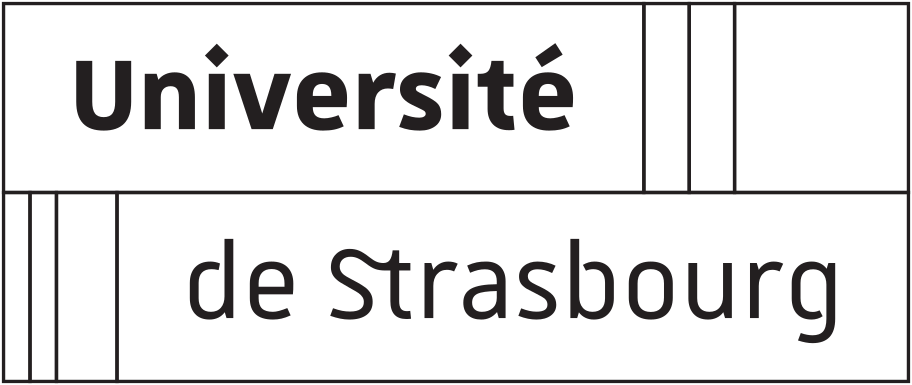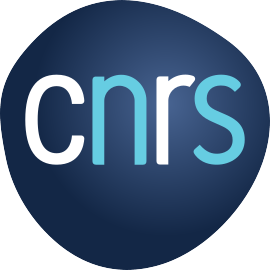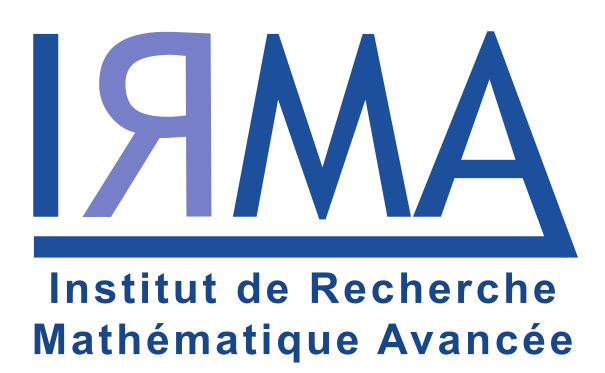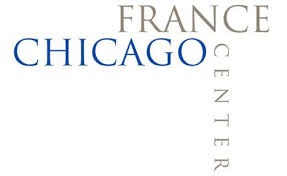. The address is
Joseph Avron (Technion): An Introduction to Zak phase
I will give an elementary introduction to Zak and Berry's phase using only 2X2 matrices
Sven Bachmann (University of British Columbia): G-charge Thouless pump
In his seminal work, Thouless considered the evolution of non-interacting electrons under periodic driving and showed that the charge transported in a cycle is quantized provided the Fermi energy remains in a spectral gap throughout the evolution. In this talk, we will consider periodic transformations of states of locally interacting matter, which are both invariant under a compact group G and short range entangled. We will explain that a discrete $G$-charge is pumped during each cycle. Moreover, the pumped charge is invariant under smooth deformations of the loops and two loops pumping the same charge can be deformed into each other.
This is joint work with W. De Roeck, M. Fraas and T. Jappens.
Igor Burban (Universität Paderborn): Magnetic bundle in the Haldane-Rezayi model of the fractional quantum Hall effect
In 1985 Haldane and Rezayi introduced analogues of the Laughlin wave function with quasi-periodic boundary conditions. The space of such functions turned out to be $m$-dimensional, where $m$ is determined by the magnetic field acting on the electron system. I am going to explain a construction of a hermitian holomorphic bundle of rank $m$ on a complex torus, whose fibres can be identified with the space of wave function of Haldane-Rezayi. A rigorous construction of this bundle involves the technique of Fourier-Mukai transforms. I shall also prove that this bundle is stable and its canonical Chern-Weil connection is projectively flat.
This is a joint work in progress with Semyon Klevtsov.
Laurent Charles (Sorbonne Université): On Landau levels of magnetic Schrödinger operators on compact manifolds
In the limit of a large non-degenerate magnetic field, magnetic Schrödinger operator on compact manifolds have spectral clusters, which are reminiscent of the Landau levels. I will discuss some properties of these clusters : dimension in terms of characteristic classes, dynamics, state density, entanglement.
Benoit Douçot (Sorbonne Université): Topological electrostatics
Two-dimensional electron gases under a strong magnetic field have tremendously expanded our understanding of many-body physics, with the discovery of integer and fractional quantum Hall effects, together with chiral edge states, fractional excitations, anyons. Another striking effect is the strong coupling between charge and spin/valley degrees of freedom, which takes place near integer filling M of the magnetic Landau levels. More precisely, because of the large energy gap associated to cyclotron motion, any slow spatial variation of the spin background induces a variation of the electronic density proportional to the topological density of the spin background. Minimizing Coulomb energy leads to an exotic class of two-dimensional crystals, which exhibit a periodic non-collinear spin texture called a Skyrmion lattice.
I will focus on the limit where a perfect SU(N) symmetry is assumed to hold in the space of internal electronic states. In this case, minimal energy Skyrmion lattices may be described in terms of holomorphic maps from a torus to the Grassmannian manifold Gr(M,N), such that the associated topological charge density is as uniform as possible. Such maps can be constructed by choosing N linearly independent sections of a rank M holomorphic vector bundle on a torus. The main outcome of such analysis is the existence of two regimes depending on whether the topological charge on the torus is smaller (unfrustrated case) or larger (frustrated case) than the number of internal states N accessible to electrons. In the former case, minimal energy Skyrmion lattices for M = 1 are obtained by choosing an orthonormal basis of sections of the associated line bundle with respect to the usual geometric quantization hermitian product. In the general M > 1 case, I will show that we can, to a large extent, identify minimal energy Skyrmion lattices by combining the solution of the M = 1 case with Atiyah’s explicit description of rank M vector bundles on a torus.
Benoit Estienne (Sorbonne Université): Cornering the universal shape of fluctuations
Understanding the fluctuations of observables is one of the main goals in physics. We investigate such fluctuations for two-dimensional systems when a subregion of the full system can be observed, focusing on geometries with corners. We report that the dependence on the opening angle is super-universal: up to a numerical prefactor, this function does not depend on anything, provided the system under study is uniform, isotropic, and correlations do not decay too slowly. The prefactor contains important physical information: we show in particular that it gives access to the long-wavelength limit of the structure factor. We illustrate our findings with several examples: classical fluids, fractional quantum Hall (FQH) states, and scale invariant quantum critical theories. We will also discuss generalizations to three dimensions.
Ref: Nature Comm. 13 : 287 (2022).
Clotilde Fermanian (Université Paris-Est): Some results about the dynamics of an electron in a crystal
This talk is devoted to a Schrödinger equation modeling the dynamics of an electron in a crystal in the asymptotic regime of small wave-length comparable to the characteristic scale of the crystal. We will present a description of the limit of time averaged energy densities under rather general assumptions authorizing crossings between the Bloch modes that are involved by the Bloch-Floquet approach that we adopt here.
Joint work with Fabricio Macia (Politecnico, Madrid) and Victor Chabu (Sao Paulo).
Gian Michele Graf (ETH Zürich): Topology in shallow-water waves: A violation of bulk-edge correspondence
Topological matter in seen to enjoy a remarkable duality, no matter the specific instance or model being considered, namely bulk-edge correspondence: The homotopy class characterizing the extended material is reflected in a matching property of the excitations running along its boundary. After reviewing the correspondence, we will address a counterexample. A two-dimensional rotating shallow-water model describes a layer of water, in guise of oceans covering the Earth. Its mathematical description parallels that of a band insulator, except for the energy range of a band being unbounded. Once regularized at small scale by an odd-viscous term, such a model has a well-defined bulk topological index. However, in presence of a sharp boundary, the number of edge modes depends on the boundary condition, showing an explicit violation of the bulk-edge correspondence. We study a continuous family of boundary conditions with a varied phase diagram, and explain the origin of this mismatch. Our approach relies on scattering theory and Levinson’s theorem. The latter does not apply at infinite momentum because of the analytic structure of the scattering amplitude there, which is ultimately the reason for the violation.
Joint work with H. Jud and C. Tauber.
Hideki Inoue (Université de Lyon): Topological Levinson’s theorem with two Hilbert spaces: from finite graphs to insulators
Levinson’s theorem is a fundamental relation in quantum scattering theory originally established for spherically symmetric potentials by N. Levinson in 1949. In the last about 15 years, topological approach to this relation has been widely popularised. In this talk, we formulate a topological version of Levinson’s theorem for a scattering problem, where free and perturbed Hamiltonians act on different Hilbert spaces. The model consists of a bundle of conducting wires attached to a gapped quantum system. We also explain potential applications to scattering theory for topological insulators.
This talk is based on an ongoing project with J. Kellendonk and H. Schulz-Baldes.
Johannes Kellendonk (Université de Lyon): K-theoretic bulk boundary / interface correspondence for systems whose spectra are not bounded from below.
The old K-theoretic formulation of the bulk boundary correspondence for continuous operators does not apply to operators which are not bounded from below, like, for instance, the massive Dirac Hamiltonian or the shallow water model. We propose an extension of the old K-theoretic framework which also describes interface models and a bulk interface correspondence. It can applied to operators which are not bounded from below.
This is joint work with Tom Stoiber.
Giovanna Marcelli (SISSA Trieste): Purely linear response of the quantum Hall current to space-adiabatic perturbations
Using recently developed tools from space-adiabatic perturbation theory, in particular the construction of a non-equilibrium almost-stationary state, we give a new proof that the Kubo formula for the Hall conductivity remains valid beyond the linear response regime. In particular, we prove that, in quantum Hall systems and Chern insulators, the transverse response current is quantized up to any order in the strength of the inducing electric field. The latter is introduced as a perturbation to a periodic, spectrally gapped equilibrium Hamiltonian by means of a linear potential; existing proofs of the exactness of Kubo formula rely instead on a time-dependent magnetic potential. The result applies to both continuum and discrete crystalline systems modelling the quantum (anomalous) Hall effect.
This seminar is based on joint work with D. Monaco (arXiv: 2112.03071).
Massimo Moscolari (Universität Tübingen): General bulk-edge correspondence at positive temperature
By extending the gauge covariant magnetic perturbation theory to operators defined on half planes, we prove that for general 2d random ergodic magnetic Schrödinger operators the celebrated bulk-edge correspondence is just a particular case of a much more general paradigm, which also includes the theory of diamagnetic currents and of Landau diamagnetism. Our main result is encapsulated in a formula, which states that the derivative of a large class of bulk partition functions with respect to the external constant magnetic field, equals the expectation of a corresponding edge distribution function of the velocity component which is parallel to the edge. Neither spectral gaps, nor mobility gaps, nor topological arguments are required.
The equality between the bulk and edge indices, as stated by the conventional bulk-edge correspondence, is obtained as a corollary of our purely analytical arguments by imposing a gap condition and by taking a "zero temperature" limit.
The talk is based on joint works with H. Cornean, B. Støttrup and S.Teufel.
Anne Nielsen (Aarhus University): Fractional Quantum Hall Effect in Fractal Dimensions
The fractional quantum Hall effect appears in two-dimensional systems and gives rise to interesting physics, such as anyons. Here, we show that anyons and the fractional quantum Hall effect can also be realized in fractal dimensions. We do this by constructing fractional quantum Hall models on different fractals and demonstrating that quasiparticles created in the models display anyonic charge and braiding statistics. Some of the models have a fractional quantum Hall trial state as exact ground state, which allows us to consider large system sizes. We also discuss how the properties of fractional quantum Hall systems on fractals differ from the two-dimensional case. Finally, we show that a Hofstadter type Hamiltonian produces fractional quantum Hall physics and anyons on a small fractal lattice.
References: PRResearch 2, 023401 (2020); PRA 105, L021302 (2022); PRB 105, 085152 (2022).
João Nunes (Universidade Técnica de Lisboa): Evolution of Laughlin states under deformation of geometry
As is well known, the one-particle states for the quantum Hall effect in two dimensions correspond to the quantum states of the holomorphic quantization of the two-dimensional surface. We will review how Hamiltonian dynamics in imaginary time allows for a natural description of the evolution of these one-particle states under deformations of the two-dimensional geometry. We will apply this to the evolution of the Laughlin states of the FQHE on the sphere under axially symmetric strong deformations of the metric.
This is based on arXiv:2107.11360.
Steven Rayan (University of Saskatchewan): Quantum matter from algebraic geometry
The rapidly-growing field of topological materials has brought with it unexpected new connections between physics and pure mathematics. In particular, algebraic topology has played a significant role in the classification of topological materials. In this talk, I will offer a brief look at an emerging chapter in this story in which algebraic geometry is used to anticipate new forms of quantum matter associated to 2-dimensional hyperbolic lattices.
In the process, I will explain recent joint work with J. Maciejko that establishes a hyperbolic band theory.
Nicolas Regnault (Princeton University): Equipartition of Entanglement in Quantum Hall States
We will discuss the full counting statistics (FCS) and symmetry-resolved entanglement entropies of integer and fractional quantum Hall states. For the filled lowest Landau level of spin-polarized electrons on an infinite cylinder, we will show that FCS is Gaussian and entanglement spreads evenly among different charge sectors. Moving to the interacting Laughlin state, the entanglement spectroscopy can be carried out assuming the Li-Haldane conjecture. The results confirm equipartition up to small charge-dependent terms, and are then matched with numerical computations based on exact matrix product states.
Nicolas Rougerie (ENS Lyon): Effective models for emerging anyons
Fundamental particles come in two types: fermions and bosons, according to whether they satisfy the Pauli exclusion principle or they do not. However, quasi-particles of certain low-dimensional condensed matter systems may violate this fundamental dichotomy and have an intermediate behavior.
Such exotic quasi-particles, called anyons, can be described as ordinary bosons or fermions with special long-range magnetic interactions (coupling to Aharonov-Bohm magnetic flux tubes). This leads to intricate models for which well-educated approximations are desirable.
In this talk I will survey the rigorous derivation of such approximations from the basic many-body Schrödinger Hamiltonian with Aharonov-Bohm fluxes. We study limit situations where the anyon statistics/magnetic interaction is seen as a perturbation either "from the bosonic end" or "from the fermionic end”. We vindicate mean-field-type approximations, proving that the ground state of a gas of anyons is described to leading order by a magnetic non-linear Schrödinger theory (bosonic end) or a semi-classical, Vlasov-like, energy functional (fermionic end).
Mostly joint works with Théotime Girardot and Douglas Lundholm
Hermann Schulz-Baldes (Universität Erlangen-Nürnberg): Invariants of disordered semimetals via the spectral localizer
The spectral localizer consists of placing the Hamiltonian in a Dirac trap. For topological insulators its spectral asymmetry is equal to the topological invariants, providing a highly efficient tool for numerical computation. Here this technique is extended to disordered semimetals and allows to access the number of Dirac or Weyl points as well as weak invariants. These latter invariants imply the existence of surface states. Joint work with Tom Stoiber.
Jean-Marie Stephan (Université de Lyon): Edge modes and counting statistics in the 2d and 4d Quantum Hall effect
I discuss simple Slater determinant wave functions generalizing the two-dimensional Integer Quantum Hall effect to four dimensions (4d). The corresponding gapless modes at the edge of the droplet are known to be anisotropic: they only propagate in one direction, foliating the 3d boundary into independent 1d conduction channels. In this talk, I focus on 4d droplets confined by harmonic traps, and show that the nature of the 1d conduction channels depend strongly on the commensurability of the trapping frequencies. In particular incommensurable frequencies produce quasi-periodic, ergodic trajectories; the corresponding correlation functions of edge modes also exhibits fractal-like features. I explore the consequences on counting statistics for particles in a region of space in 4d but also back in 2d.
Joint works with B. Estienne, B. Oblak, and W. Witczak-Krempa.
Piotr Surowka (Wrocław University of Science and Technology): Odd viscoelasticity
Hydrodynamic description of phases of matter has been crucial in uncovering the connections with topology and geometry. Exploring them has led to many advancements in our understanding of classical and quantum fluids. Viscoelasticity, described by rheology, is a more general hydrodynamic behavior of systems that exhibit both viscous and elastic characteristics when undergoing deformation. Such a behavior ranges from soft materials to quantum Hall physics. In the talk I will review the basics of viscoelasticity, present its modern formulation based on symmetries and show how chiral parity breaking effects lead to new viscoelastic responses, dubbed odd viscoelasticity. Finally, I will highlight applications of odd rheology to chiral two-dimensional phases of matter.
Paul Wiegmann (University of Chicago): Selberg-Dyson integrals (Coulomb gas) on a Jordan curve
Amanda Young (Technische Universität München): A bulk gap in the presence of edge states for a Haldane pseudopotential
In this talk, we discuss a recent result on a bulk gap for a truncated 1/3-filled Haldane pseudopotential for the fractional quantum Hall effect. For this Hamiltonian with either open or periodic boundary conditions, we prove a spectral gap above the highly degenerate ground-state space which is uniform in the volume and particle number. Our proofs rely on identifying invariant subspaces to which we apply gap-estimate methods previously developed only for quantum spin Hamiltonians. In the case of open boundary conditions, the lower bound on the spectral gap accurately reflects the presence of edge states, which do not persist into the bulk. Customizing the gap technique to the invariant subspace, we avoid the edge states and establish a more precise estimate on the bulk gap in the case of periodic boundary conditions. The same approach can also be applied to prove a bulk gap for the analogously truncated Haldane pseudopotential with maximal half filling, which describes a strongly correlated system of spinless bosons in a cylinder geometry.
Based off joint work with S. Warzel.
Dimitri Zvonkine (Université de Versailles Saint-Quentin en Yvelines): Fractional quantum Hall effect via the Grothendieck-Riemann-Roch formula
We study the fractional quantum Hall effect on a Riemann surface of genus g traversed by a magnetic field of total flux d. The wave functions of charged particles have a semi-phenomenological description by Laughlin states. These states can be studied by methods of algebraic geometry: they form a holomorphic vector bundle over the d-th Picard group of the Riemann surface. The Chern characters of this vector bundle can be computed by the Grothendieck-Riemann-Roch formula. In a fully filled state the Chern character we obtain is compatible with the existence of a projectively flat connection on the vector bundle. In a state with quasiholes our computation implies that no such connection can exist. This is joint work with Semyon Klevtsov.




